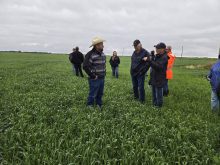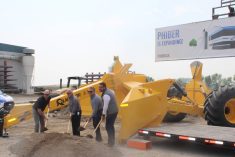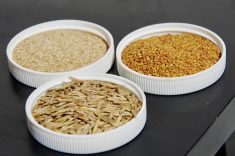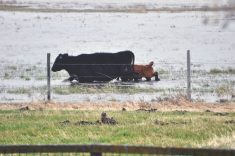Winter continues to pummel us with extreme cold, wind and snow. A normal winter, if there is such a thing, occasionally gives us a breather, but not this year.
Winters like this year create discussion about what type of cattle operation is best. Despite the discussion, the fact remains that the cows need to be fed.
Calving-time discussions are relevant, as are discussions on high versus low input and big versus small cows. The bottom line is that producers must select a cattle management system they are comfortable with. What is even more important is that, in every system, producers still must feed the cows.
Read Also

Pig transport stress costs pork sector
Popular livestock trailer designs also increase pig stress during transportation, hitting at meat quality, animal welfare and farm profit, Agriculture and Agri-Food Canada researcher says
If more time was spent discussing the nutrient requirements of beef instead of the merits of different systems, all the cows would be better off.
The discussion with a nutritionist involves four basic needs. How much do the cows weigh and milk? How is the environment affecting the feeding requirements of the cattle? What stage of production are the cattle in? Lastly, what type of feed do you have available?
The answers to these four questions have nothing to do with the management system the producer has developed. The important part is that the producer can answer the questions factually so the nutritionist can correctly calculate a feeding plan.
The nutritionist will take into consideration the cows, environment, stage of production, feeds available and the nutritional analysis of those feeds when the ration is formulated. Getting the correct answers is critical.
LET’S ASSUME
Let’s take the very first question about how big the cows are. Greg Lardy, North Dakota State University beef cattle specialist and nutritionist, shared some calculations that help show the amount of feed that a cow would need in a given environment (-15C and no mud), a given milk production (17.6 pounds peak milk production during lactation) a given stage of production (a cow in the last two-thirds of pregnancy) and a given feed resource (55 per cent total digestible nutrient forage).
Lardy calculated the dry matter intake for every 100 pounds of cows weighing from 1,000 to 2,000 pounds. The 1,000-pound cow requires 26.5 pounds of dry matter per day, while the 2,000-pound cow requires 42.2 pounds of dry matter per day.
The larger cow needs a lot more than a fork or two more of hay. It actually needs 15.7 pounds more of dry matter. It’s simply a biological need, which is not good or bad.
Likewise, the smaller cow will waste feed that is provided over what she actually needs – so know your cows and how much they need to eat.
If we accept Lardy’s assumptions, the 1,000-pound cow needs 26.5 pounds of dry matter forage. The table with this article lists the daily dry matter needs for different weights of cows.
This illustrates how the amount of feed a cow needs varies considerably by body weight. Other factors also influence the amount of dry matter forage a cow needs to consume.
Now is not the time to misjudge cow nutrition. When you get to visit with the nutritionist, make sure you adjust the cow feeding for your environment, cow size, expected milk production and cows at calving time.



















